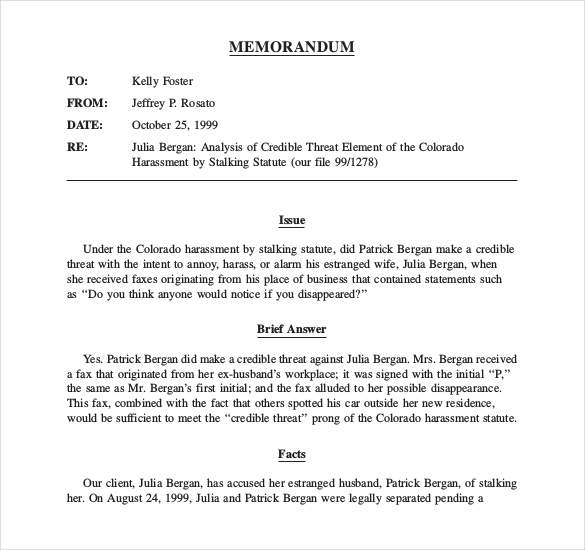
The memo should be easy to read and it should be easy to understand the information that is being communicated. When writing a memo, it is important to use a clear and concise tone of voice. For example, a memo may be used to announce a change in the company’s policies or to provide information about a new product or service. Memos can also be used to communicate with clients or customers.
#Example of legal memo update
For example, a memo may be used to provide an update on the progress of a project or to announce the launch of a new initiative. Memos can also be used to provide updates on specific projects or initiatives.
#Example of legal memo how to
For example, a memo may be used to provide instructions on how to complete a specific task or to announce a change in the company’s policies or procedures. One of the most common uses of a memo is to provide instructions to employees. Memos can be used to provide instructions, to announce changes or to provide updates on specific projects or initiatives. However, this should be adapted according to needs of the memo or the guidelines of your lecturer.A memo is a short, formal letter that is used to communicate specific information to a specific person or group of people. The following is a suggested model structure. The style should be formal and professional, and language and tone suitable for the recipient for example, avoid technical terms and legal jargon when writing for a client. See Eas圜ite for guidance on using AGLC4 referencing.Īlso, be aware of your reader as this influences the language you use to communicate your reasoning. Information on referencing can be found on the Learning Lab. Visit the Library's law and justice subject guide to access major Australian legal resources and help on searching them.Īcknowledge sources accurately to avoid plagiarism. Plan the document (content and structure)Įdit and review is it logical and clear? Undertake research using reliable authorative sources Identify the matters and any sub-issues to be discussed Identify the purpose according to the task At university, check the assignment brief and marking rubric to be clear about the task requirements. Different lecturers and firms can have their own preferences even though the memo will contain the same elements. There is no one correct way to present your memo. Your memo should be well organised to reflect your analysis and reasoning. It is the culmination of your legal research.

The memo summarises and analyses any relevant laws in relation to the facts of a particular situation.

This may seem pretty basic but if you dont understand. Legal policy: written for a political authority or organisation responsible for policy changepresents an argument in favour of the client's position Memo online Samples - Good tips of how to write good quality legal memo 1. Letter to a client: presents the client's situation, focussing on potential actions and outcomes, often making recommendations about a course of action In-house document: written for a colleague or superior provides your assessment of the client's situation based on the facts of the case and current law They should be clear, concise and informative. All memos provide advice or legal opinion but can have different audiences or intended recipients. Legal memorandums that are written as assignments can take three forms: an in-house document, a letter to a client, or a paper on legal policy.


 0 kommentar(er)
0 kommentar(er)
